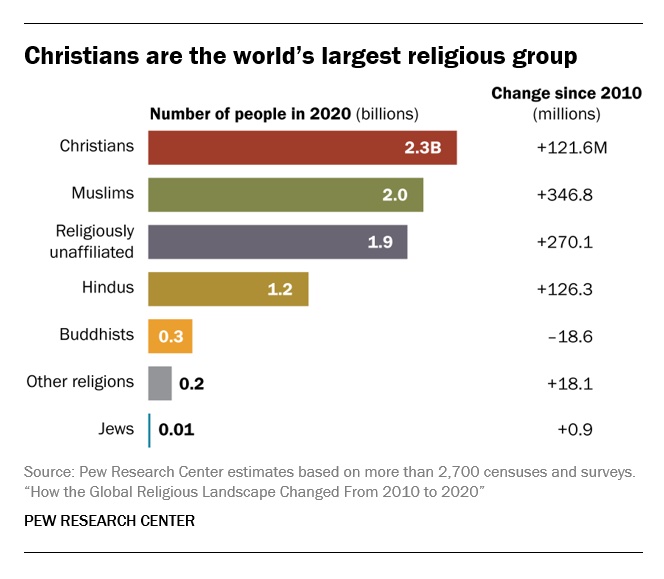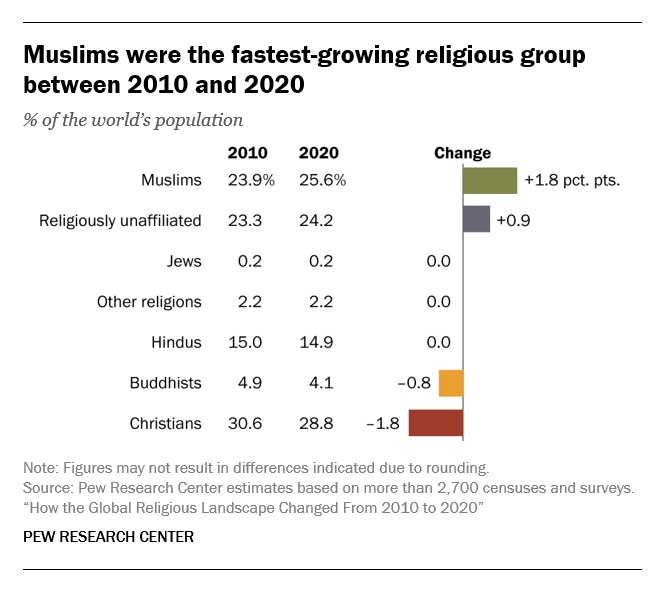Uncategorized
Ukrainian Jewish life has always taken place in Russian. Now a race to translate is underway.
LVIV, Ukraine (JTA) – The rabbis sat around a breakfast table, discussing Russia’s war on the country where they work in a mixture of Yiddish, Hebrew and Russian. They named their hometowns as Lugansk, Lvov and Dnepr, the Russian names for Ukrainian cities that have vaulted into international headlines since Russia invaded Ukraine in February.
Although they were focused on Ukraine’s progress in the fighting, the rabbis uttered not a single word in Ukrainian. How could they? Like the vast majority of Jews in Ukraine, none of them speaks the country’s official language.
Russian has long been the first language for a wide swath of Ukrainians, including the majority of the country’s Jews. But after the Russian invasion, many Ukrainians decided they wanted to speak less Russian and more Ukrainian. Many Jews, similarly horrified by the sight of thousands of Russian soldiers pouring over Ukraine’s borders and wishing to demonstrate their Ukrainian bonafides, have made the same choice — even as it means disrupting a long linguistic tradition.
So when the rabbis’ successors meet for pancakes and sour cream, they will be far more likely to introduce themselves as the rabbis of Luhansk, Lviv and Dnipro, the Ukrainian names for their hometowns that have become the standard in English. They will also likely be able to hand their students and congregants Ukrainian-language versions of central Jewish texts that simply do not exist now.
“Many of my friends say that they are embarrassed to use Russian as a language. They say that we are Ukrainian Jews, and that Russia is a terrorist country fighting us and that we shouldn’t use their language,” said Rabbi Meir Stambler, from Dnipro. “Others say that [Russian president Vladimir] Putin doesn’t own the Russian language. It is an issue.”
He added, “This is something that people are discussing all the time.”
A decade ago, half of Ukrainians said they spoke Russian as their native language. That number has declined to 20%, fueled in part by resentment over Russia’s aggressions in Crimea, a contested region that it annexed by force in 2014. But Jews have remained predominantly Russian-speaking, even in parts of western Ukraine where Ukrainian has long been the dominant language. (Russian and Ukrainian are related linguistically, but their speakers cannot understand each other.)
Russia’s war on Ukraine has Ukrainian Jews playing catchup. Stambler, who heads the Federation of Jewish Communities, a body affiliated with the Hasidic Chabad-Lubavitch movement that operates a network of 36 synagogues around Ukraine, offers a stark prediction: “Within 10 years, every Jew in Ukraine will speak Ukrainian.”
The dominance of Russian among Ukraine’s Jews, who numbered in the tens of thousands before the war, has deep roots.
“The historical trajectory of Jews in what is now Ukraine led them in the 19th century to adopt Russian rather than Ukrainian,” says historian Natan Meir, a professor of Judaic studies at Portland State University. “That was because Ukrainian was perceived as a peasant language that did not have any high culture associated with it, and because there were no economic advantages to adopting Ukrainian at the time.”
Now, the upside of switching to Ukrainian — demonstrating a national allegiance during a time of war — couldn’t be clearer.
“Jews feel quite integrated into Ukrainian society, but a shift, even if it is a gradual shift, to Ukrainian is going to make that more tangible than ever,” Meir said, calling the Russian invasion “absolutely game-changing” for Ukrainian Jews. “They will be perceived even more strongly than they have been as being wholly Ukrainian and part of the fabric of Ukrainian society.”
Most Ukrainian Jews, especially those educated since the collapse of the Soviet Union, can now speak some Ukrainian. But their ability often depends on where they grew up: Many Jews in traditionally Russophone cities such as Odesa, Dnipro or Kharkiv can struggle with the language, while their grandparents often cannot speak it at all.
Books in both Hebrew and Russian sit on a bookshelf at Medzhybizh. (Jacob Judah)
“Not more than 20% were Ukrainian-speaking at home,” says Stambler. “Take President [Volodymyr] Zelensky. He knew Ukrainian, but he didn’t speak it at home, and he had to polish it up when he became president.”
It will not be simple for the Jewish community to suddenly switch to Ukrainian, the most widely spoken European language without a standardized translation of the Torah.
Two years ago, a team of translators working in Israel, Austria and Hungary began working to produce Ukrainian-language Jewish texts. But before the Russian invasion, the effort had so far produced only a Ukrainian book of psalms, or tehillim.
In May, two months into the war, a decision was made to accelerate work on a daily prayer book. A Torah could follow.
“The chumash is difficult,” said Stambler, who oversees the half-dozen-strong team of translators from his base in Dnipro, using the Hebrew word for the printed form of the Torah. “We are working on it.”
While translating sacred texts can take years, other changes have come faster. The leaflets, brochures and calendars that are a fixture at any Jewish center in Ukraine were quickly swapped out Russian for Ukrainian, at least at the federation’s headquarters. Before February, these had often been produced and printed by Russian Jewish communities and shared with those in Ukraine, for simplicity’s sake.
“This differentiation from Russian Jewry is going to be huge,” said Meir, the historian. “Up until this point they have essentially formed one linguistic and cultural space that all Jews, whether they were in Ukraine, Russia or Belarus could move freely between.”
Now, the ties between those communities are both logistically complicated to maintain — trade routes have been ruptured — and also potentially a liability at a time when anyone in either Russia or Ukraine showing an affinity for the other country can face suspicion or penalties.
“This shift, if it actually happens, is going to be marking out a totally new cultural space for Ukrainian Jews and almost a declaration of independence,” Meir said “Or at least that is the aspiration, because there is so much of their heritage which is still based in the Russian language that it is going to be a long time before they can fully separate.”
That separation process, which began to take shape most clearly after 2014, has quickened. “We started doing things ourselves,” said Stambler. “We used to do about 20% in Ukrainian for the Jews in western towns like Lviv, Ivano-Frankivsk and Uzhhorod, but we are making a much stronger push now.”
He estimates that some 75% of material being distributed to Ukrainian Jewish communities by the Federation of Jewish Communities was in Ukrainian by September, up from 20% to 35% in January.
Young rabbis who come from the United States or Israel to serve small Jewish communities across Ukraine now say that they have had to add Ukrainian alongside their Russian classes.
“I began with Russian,” said one of those rabbis who works in Vinnitsya, until he decided over the summer that he had to learn Ukrainian. “I realized that I had to learn Ukrainian because I needed it on the street. I needed it to speak with the government and with the media.”
Signs in a synagogue in Ukraine are written in both Ukrainian and Russian. (Jacob Judah)
Some Ukrainian Jews are voting with their voices.
“My whole life, I spoke only Russian,” said Olha Peresunko, who before the war lived in Mikolaiv in southern Ukraine. “But after the 24th of February I am speaking only Ukrainian.”
Peresunko was speaking outside a Lviv synagogue this fall, where she and other refugees were waiting for food parcels. She had fled Mikolaiv, which has sustained repeated assault by Russian troops, for Lviv with her mother and two children while her husband is on the frontlines.
Her children are finding it hard to adjust to the exclusive Ukrainian environment in Lviv, but she is confident that they will make the shift. “They will speak Ukrainian as their first language,” Peresunko said.
Exactly how much the shift to Ukrainian will change local Jewish communities is a matter of debate. Rabbi Shalom Gopin, who fled to Kyiv in 2014 from his home community in Luhansk, an overwhelmingly Russophone city seized by Russia-backed separatists at that time, said he, too, believes that Ukrainian will displace Russian as the lingua franca of Ukrainian Jewry.
A Ukrainian woman displays her Ukrainian-language Jewish calendar as a source of pride, September 2022. (Jacob Judah)
“They are starting to slowly speak Ukrainian,” he said. “It is no problem. There are lots of Jews in America who speak English. We live here, and we speak the languages of the places that we live. It is normal.”
But Gopin said the linguistic shift “means nothing” amid other issues facing Jews in Ukraine, where Russia’s war is threatening to undo 30 years of Jewish community building, largely though not exclusively led by Chabad, Gopin’s Orthodox movement.
“The problem for the Jews of Ukraine is not language,” he said. “It is about how much they are going to synagogue, or how many children are going to Jewish schools, not about what they are speaking.”
Natalia Kozachuk, 45, a Jewish businesswoman in Lviv, sees only upside to shedding Russian, her native language. She has started to speak to her children only in Ukrainian.
“It will be hugely positive if Jews speak more Ukrainian,” Kozachuk said. This is the only way that Jews can truly “learn more about the Ukrainian people,” she said, “about their history and the positive qualities and strengths of Ukraine.”
“Only good can come of it,” she added. “We will understand each other better.”
—
The post Ukrainian Jewish life has always taken place in Russian. Now a race to translate is underway. appeared first on Jewish Telegraphic Agency.
Uncategorized
How the Global Religious Landscape Changed from 2010 to 2020

Muslims grew fastest; Christians lagged behind global population increase
• Christians are the world’s largest religious group, at 28.8% of the global population. They are a majority everywhere except the Asia-Pacific and Middle East-North Africa regions. Sub-Saharan Africa has surpassed Europe in having the largest number of Christians. But Christians are shrinking as a share of the global population, as millions of Christians “switch” out of religion to become religiously unaffiliated.

• Muslims are the world’s second-largest religious group (25.6% of the world’s population) and the fastest-growing major religion, largely due to Muslims’ relatively young age structure and high fertility rate. They make up the vast majority of the population in the Middle East-North Africa region. In all other regions, Muslims are a religious minority, including in the Asia-Pacific region (which is home to the greatest number of Muslims).

• The religiously unaffiliated population is the world’s third-largest religious category (24.2% of the global population), after Christians and Muslims. Between 2010 and 2020, religiously unaffiliated people grew more than any group except Muslims, despite their demographic disadvantages of an older age structure and relatively low fertility. The unaffiliated made up a majority of the population in 10 countries and territories in 2020, up from seven a decade earlier.
• Hindus are the fourth-largest religious category (14.9% of the world’s population), after Christians, Muslims and religiously unaffiliated people. Most (99%) live in the Asia-Pacific region; 95% of all Hindus live in India alone. Between 2010 and 2020, Hindus remained a stable share of the world’s population because their fertility resembles the global average, and surveys indicate that switching out of or into Hinduism is rare.
• Buddhists (4.1% of the world’s population) are the only group in this report whose number declined worldwide between 2010 and 2020. This was due both to religious disaffiliation among Buddhists in East Asia and to a relatively low birth rate among Buddhists, who tend to live in countries with older populations. Most of the world’s Buddhists (98%) reside in the Asia-Pacific region, the birthplace of Buddhism.
• Jews, the smallest religious group analyzed separately in this report (0.2% of the world’s population), lagged behind global population growth between 2010 and 2020 – despite having fertility rates on par with the global average – due to their older age structure. Most Jews live either in North America (primarily in the United States) or in the Middle East-North Africa region (almost exclusively in Israel).
These are among the key findings of a Pew Research Center analysis of more than 2,700 censuses and surveys, including census data releases that were delayed due to the coronavirus pandemic. This report is part of the Pew-Templeton Global Religious Futures project, which analyzes global religious change and its impact on societies around the world. Funding for the Global Religious Futures project comes from The Pew Charitable Trusts and the John Templeton Foundation.
Uncategorized
Antisemitism in some unlikely places in America

By HENRY SREBRNIK Antisemitism flourishes in a place where few might expect to confront it – medical schools and among doctors. It affects Jews, I think, more emotionally than Judeophobia in other fields.
Medicine has long been a Jewish profession with a history going back centuries. We all know the jokes about “my son – now also my daughter – the doctor.” Physicians take the Hippocratic Oath to heal the sick, regardless of their ethnicity or religion. When we are ill doctors often become the people who save us from debilitating illness and even death. So this is all the more shocking.
Yes, in earlier periods there were medical schools with quotas and hospitals who refused or limited the number of Jews they allowed to be affiliated with them. It’s why we built Jewish hospitals and practices. And of course, we all shudder at the history of Nazi doctors and euthanasia in Germany and in the concentration camps of Europe. But all this – so we thought – was a thing of a dark past. Yet now it has made a comeback, along with many other horrors we assume might never reappear.
Since the Hamas attack on Israel on October 7, 2023, there has been a resurgence of antisemitism, also noticeable in the world of healthcare. This is not just a Canadian issue. Two articles on the Jewish website Tablet, published Nov. 21, 2023, and May 18, 2025, spoke to this problem in American medicine as well, referencing a study by Ian Kingsbury and Jay P. Greene of Do No Harm, a health care advocacy group, based on data amassed by the organization Stop Antisemitism. They identified a wave of open Jew-hatred by medical professionals, medical schools, and professional associations, often driven by foreign-trained doctors importing the Jew-hatred of their native countries, suggesting “that a field entrusted with healing is becoming a licensed purveyor of hatred.”
Activists from Doctors Against Genocide, American Palestinian Women’s Association, and CODEPINK held a demonstration calling for an immediate cease-fire in Gaza at the Hart Senate Office Building in Washington, D.C., Nov. 16, 2023, almost as soon as the war began. A doctor in Tampa took to social media to post a Palestinian flag with the caption “about time!!!” The medical director of a cancer centre in Dearborn, Michigan, posted on social media: “What a beautiful morning. What a beautiful day.” Even in New York, a physician commented on Instagram that “Zionist settlers” got “a taste of their own medicine.” A Boston-based dentist was filmed ripping down posters of Israeli victims and a professor at the University of Pennsylvania Perelman School of Medicine did the same. Almost three-quarters of American medical associations felt the need to speak out on the war in Ukraine but almost three-quarters had nothing to say about the war in Israel.
Antisemitism in academic medical centres is fostering noxious environments which deprive Jewish healthcare professionals of their civil right to work in spaces free from discrimination and hate, according to a study by the Data & Analytics Department of StandWithUs, an international, non-partisan education organization that supports Israel and fights antisemitism.
“Academia today is increasingly cultivating an environment which is hostile to Jews, as well as members of other religious and ethnic groups,” StandWithUs director of data and analytics, and study co-author, Alexandra Fishman, said on May 5 in a press release. “Academic institutions should be upholding the integrity of scholarship, prioritizing civil discourse, rather than allowing bias or personal agendas to guide academic culture.”
The study, “Antisemitism in American Healthcare: The Role of Workplace Environment,” included survey data showing that 62.8 per cent of Jewish healthcare professionals employed by campus-based medical centres reported experiencing antisemitism, a far higher rate than those working in private practice and community hospitals. Fueling the rise in hate, it added, were repeated failures of DEI (diversity, equity, and inclusion) initiatives to educate workers about antisemitism, increasing, the report said, the likelihood of antisemitic activity.
“When administrators and colleagues understand what antisemitism looks like, it clearly correlates with less antisemitism in the workplace,” co-author and Yeshiva University professor Dr. Charles Auerbach reported. “Recognition is a powerful tool — institutions that foster awareness create safer, more inclusive environments for everyone.”
Last December, the Data & Analytics Department also published a study which found that nearly 40 per cent of Jewish American health-care professionals have encountered antisemitism in the workplace, either as witnesses or victims. The study included a survey of 645 Jewish health workers, a substantial number of whom said they were subject to “social and professional isolation.” The problem left more than one quarter of the survey cohort, 26.4 per cent, “feeling unsafe or threatened.”
The official journal of the Alliance for Academic Internal Medicine concurs. According to “The Moral Imperative of Countering Antisemitism in US Medicine – A Way Forward,” by Hedy S. Wald and Steven Roth, published in the October 2024 issue of the American Journal of Medicine, increased antisemitism in the United States has created a hostile learning and practice environment in medical settings. This includes instances of antisemitic behaviour and the use of antisemitic symbols at medical school commencements.
Examples of its impact upon medicine include medical students’ social media postings claiming that Jews wield disproportionate power, antisemitic slogans at the University of California, Los Angeles (UCLA) David Geffen School of Medicine, antisemitic graffiti at the University of California, San Francisco (UCSF) Cancer Centre, Jewish medical students’ exposure to demonization of Israel diatribes and rationalizing terrorism; and faculty, including a professor of medicine at UCSF, posting antisemitic tropes and derogatory comments about Jewish health care professionals. Jewish medical students’ fears of retribution, should they speak out, have been reported. “Our recent unpublished survey of Jewish physicians and trainees demonstrated a twofold increase from 40% to 88% for those who experienced antisemitism prior to vs after October 7,” they stated.
In some schools, Jewish faculty are speaking out. In February, the Jewish Faculty Resilience Group at UCLA accused the institution in an open letter of “ignoring” antisemitism at the School of Medicine, charging that its indifference to the matter “continues to encourage more antisemitism.” It added that discrimination at the medical school has caused demonstrable harm to Jewish students and faculty. Student clubs, it said, are denied recognition for arbitrary reasons; Jewish faculty whose ethnic backgrounds were previously unknown are purged from the payrolls upon being identified as Jews; and anyone who refuses to participate in anti-Zionist events is “intimidated” and pressured.
Given these findings, many American physicians are worried not only as Jewish doctors and professionals, but for Jewish patients who are more than ever concerned with whom they’re meeting. Can we really conceive of a future where you’re not sure if “the doctor will hate you now?”
Henry Srebrnik is a professor of political science at the University of Prince Edward Island.
Uncategorized
The 2025 Toronto Walk (and talk ) for Israel

By GERRY POSNER There are walks and then there are walks. The Toronto UJA Walk for Israel on May 25, 2025 was one of a kind, at least as far as Canada and Jews are concerned. The number of people present was estimated to be 56,000 people or 112,000 total shoes. (How they get to that number is bewildering to me, since there is no one counting). This was 6,000 more than last year. Whether it is true or not, take it from me, it was packed. The synagogues in Canada should be so fortunate to get those numbers in total on High Holidays. The picture here gives you a sense of the size of the crowd.

This was my first walk in Toronto for Israel and I was with my granddaughter, Samantha Pyzer (not to forget her two friends whom she managed to meet at the site, no small feat, even with iPhones as aids). The official proceedings began at 9:00 a.m. and the walk at 10:00 a.m. There was entertainment to begin with, also along the way, and at the finish as well. The finish line this year was the Prosserman Centre or the JCC as it often called. The walk itself was perhaps 4 kilometres – not very long, but the walking was slow, especially at the beginning. There were lots of strollers, even baby carriages, though I did not see any wheelchairs. All ages participated on this walk. I figured, based on what I could see on the faces of people all around me that, although I was not the oldest one on the walk, I bet I made the top 100 – more likely the top 20.
What was a highlight for me was the number of Winnipeggers I met, both past and present. Connecting with them seemed to be much like a fluke. No doubt, I missed la lot of them, but I saw, in no particular order (I could not recall the order if my life depended on it): Alta Sigesmund, (who was, a long time ago, my daughter Amira’s teacher), Marni Samphir, Karla Berbrayer and her husband Dr. Allan Kraut and family. Then, when Samantha and I made it to the end and sat down to eat, I struck up a conversation with a woman unknown to me and as we chatted, she confirmed her former Winnipeg status as a sister-in- law to David Devere, as in Betty Shwemer, the sister of Cecile Devere. I also chanced upon Terri Cherniack, only because I paused for a moment and she spotted me. As we closed in near the finish, I met ( hey were on their way back), Earl and Suzanne Golden and son Matthew, as well as Daniel Glazerman. That stop caused me to lose my granddaughter and her pals. Try finding them amid the noise and size of the crowd – but I pulled it off.

As I was in line to get food, I started chatting with a guy in the vicinity of my age. I dropped the Winnipeg link and the floodgates opened with “ Did I know Jack and Joanie Rusen?” So that was an interesting few minutes. And I was not too terribly surprised to come across some of my Pickleball family. All of these meetings, along with spotting some of my sister’s family and other cousins, were carried on with the sound of the shofar as we moved along the way. In short, this was a happening. Merchants selling a variety of products, many of them Israeli based, were in evidence and, of course, the day could not have ended without the laying of tefillin, aided by Chabad, who have perfected the procedure to take less than a minute. See the photo. Chabad had a willing audience.
Aside from the joy of sharing this experience with my granddaughter, the very presence of all these Jews gathered together for a common reason made this day very special to me. However, there was a downside to the day. The downside was that, as we began to walk back to our car there was no other way I could figure out how to return when the rains came and came. While we walked faster, we were impeded by pouring rain and puddles. But Samantha wanted to persevere, as did I. We made it, but were drenched. My runners are still drying out as I write this two days later.
What with being surrounded by 56,000 people, the noise, the slow walking, and the rain, I can still say the day was a real highlight for me – one of the better moments since our arrival in Toronto in 2012. As well as the photos we took along the way, I have the reminder of the day, courtesy of the UJA, as evidenced from the photo. It was not just the walk, but the talk that accompanied the walk that made it so worthwhile for me. I would do it again, minus the rain.
